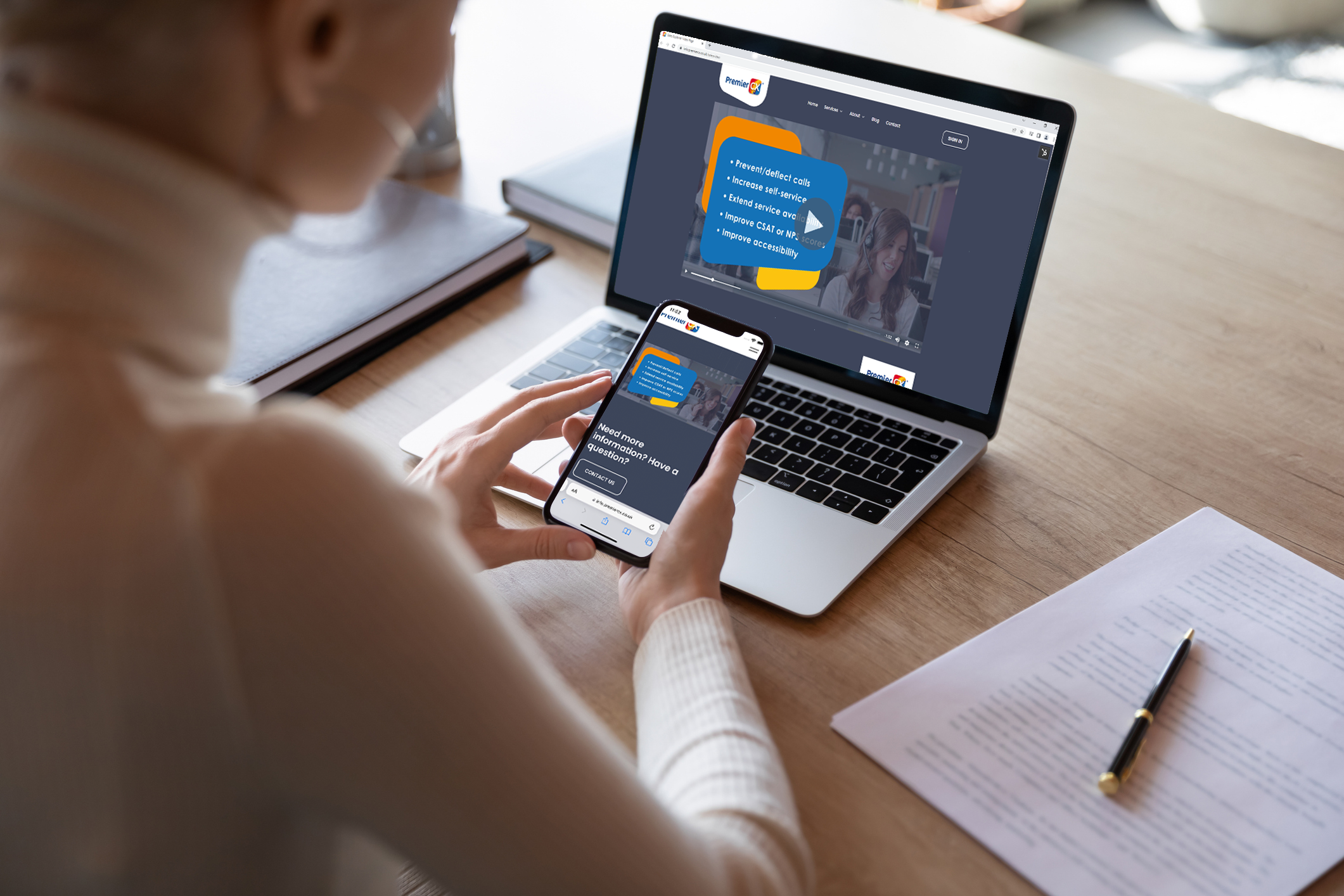Supporting Vulnerable Customers: Video

Throughout October, we've been discussing ways to better support vulnerable customers in your contact centre, by looking at the different communication channels your contact centre might use. The use of video has grown exponentially and video is now almost unbelievably popular, so this week we're taking a look at how you can make the most of it for your vulnerable customers.
The exponential growth of video as a communication tool
Take YouTube as an example - we’re looking at global reach from just one platform that reaches into the billions.
That tells us that consumers are choosing to watch video at an immense rate. Key point here being that consumers are choosing video above other channels.
Video is very effective at conveying information: Educational research “shows that 83% of human learning occurs visually” and other studies show that when you combine information and images “people retain 65% of the information three days later, as opposed to just 10% with text alone.”
So, the point of all this is, that with video, you’re delivering information through the channel your customers want to receive it, in a format that they’re far more likely to learn from, and in a way that even days later, they’re more likely to remember. All this means fewer repeat calls and fewer queries that escalate into calls in the first place.
So where’s our vulnerable customer in all that?
Well, even before we look at specific benefits, deploying video is reducing general demand on your agents, in terms of call volumes and average handling time. So that means there’s more time for them to be handling complex queries and giving time to vulnerable customers. Often, video can serve as a far more accessible communication channel for vulnerable customers with specific needs.
Let’s get into those specifics.
Visual and audible elements: Firstly, there’s the video's voiceover, which should be professionally recorded and produced for clarity. Some videos include music as well, but if desirable, there’s no reason why music couldn’t be omitted, further improving the clarity of the voice for someone with any level of hearing impairment.
Language: Like all communication channels, we recommend the language used is conversational and kept simple, steering clear of jargon or other confusing terminology, so it’s as easy as possible to understand. This is important for anyone working with English as a second language, or indeed for anyone who is, for whatever reason, unable to comprehend the accompanying text instructions.
On a how-to or instructional video, we would also suggest offering a translation of the instructions for each step, for example in Welsh. Native language elements can be introduced into this sort of content to widen its reach and accessibility.
Subtitles: Having the text, as well as the voiceover means that even if it’s not possible to listen to the video’s audio, or if a viewer has impaired hearing, it’s still completely possible to follow the steps and understand the content.
How and when should video be deployed?
Videos are very flexible in their deployment, so they can be supplied to vulnerable customers via a simple URL link through chatbot or live chat responses, proactive or reactive SMS messages, or via email. Mid conversation with an agent, a process explainer or how-to video could be sent direct, empowering the customer to take action, without the agent having to talk through every single step.
Because video can be paused, rewound, played over and over, it can be taken in at a pace and at any time the vulnerable customer needs or wants. The video is not time-pressured or only available during limited hours, it has limitless patience and will deliver the same, accurate message every single time, according to the approved scripting, tone of voice and visuals which have been agreed with the organisation.
And of course, for those vulnerable customers who find the very act of communicating with the contact centre difficult, making the video content freely available online – through a website or social media channels, gives them a reduced-stress alternative – where they can find the information for themselves.
How can we help you provide outstanding CX for every customer?
Trusted by over 350 of the UK’s biggest brands; our award-winning strategic approach seeks to streamline communication, creating a seamless and positive experience that is at once creative, clear and on-brand. Our work has a direct, tangible impact on contact centre performance, customer experience and brand reputation.
